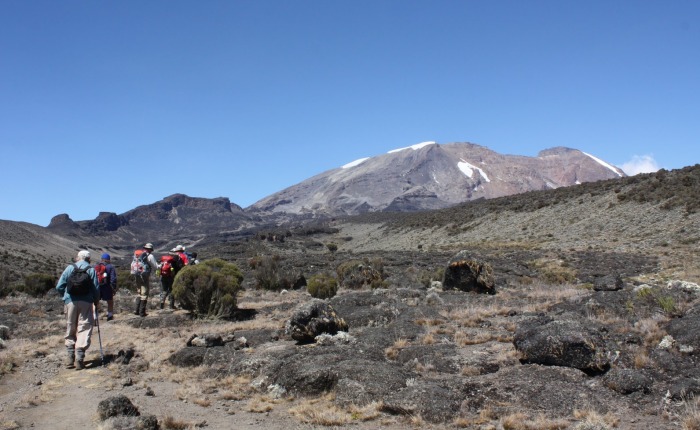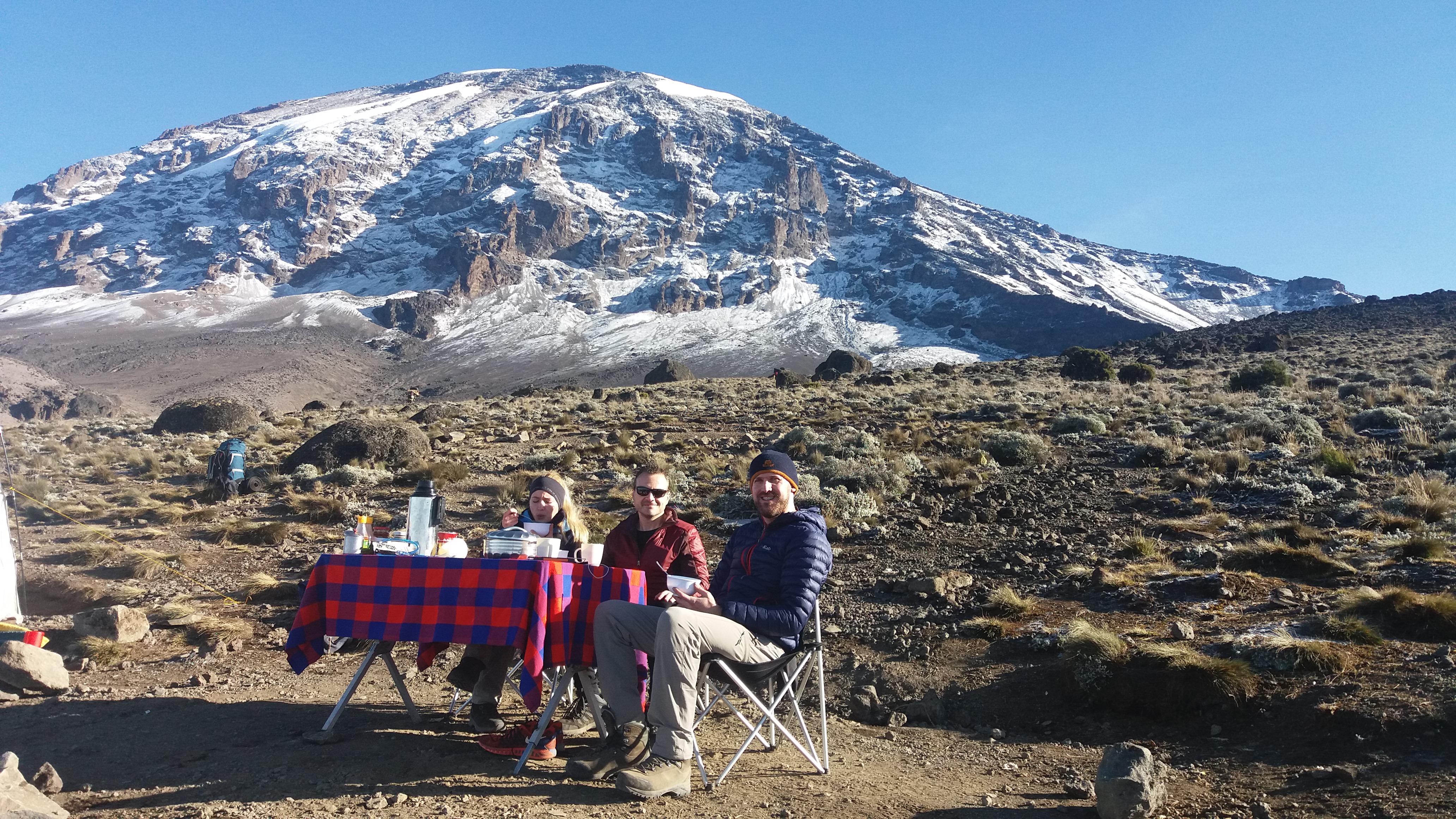OVERVIEW
The Rongai Route begins near the Kenyan border on the remote northern side of Kilimanjaro. We hike through a true wilderness area to the jagged Mawenzi Peak, then cross a barren desert saddle before climbing the eastern crater wall of Kibos. The Rongai route is a more gradual ascent, so it is preferred by those with little or no backpacking experience, but it is equally enjoyable for those who want to see wild animals.
ITINERARY
Day 0: Touchdown in Tanzania
You will be met by your guide, who will give you a briefing on your forthcoming trip and check your equipment to make sure you have all the appropriate mountain gear, when you are picked up at the Kilimanjaro International Airport and taken to your hotel in Moshi town. On this day, the missing equipment can be rented. No meals are included.
Day 1: Rongai Simba Camp (2,600 m)
The porters and guides will be ready to return to the car drive to Rongai gate after completing the necessary registration formalities at the Marangu National Park gate. The climb begins at Nale Moru (1,950 m) on a small path that winds through maize and potato fields before entering pine forest. Climbs steadily but gently through beautiful forest that is home to a variety of wildlife, including the beautiful Kilimanjaro Colobus monkey. These monkeys are black with long white hair and a white tail that flows. The forest begins to thin out, and the first camp, Rongai One Camp (2,600 m), is on the outskirts of the moorland zone, with expansive views of the Kenyan plains.
Day 2: Kikelewa Caves (3.600 m)
We now leave the main trail and take a smaller path across the moorland towards the jagged peaks of Mawenzi. Our campsite is located near Kikelewa Caves in a sheltered valley with giant senecios (3.600 m). After lunch, you can explore the valley or relax.
Day 3: Mawenzi Tarn hut (4,330m)
A short but steep climb rewards you with spectacular all-around views and a tangible sense of wilderness. We leave the vegetation behind shortly before arriving at the next camp, Mawenzi Tarn hut (4,330m), which is spectacularly located in a cirque directly beneath Mawenzi’s towering spires. As part of the acclimatisation process, the afternoon will be free to rest or explore the surrounding area.
Day 4: Kibo campsite (4,700m)
We cross the lunar desert of the ‘Saddle’ between Mawenzi and Kibo to arrive at the Kibo campsite (4,700m) at the base of the Kibo crater wall. Other hikers from the Marangu route will be staying in the hut with you. The rest of the day is spent resting up for the final ascent before a very early night.
Day 5: Horombo Hut (3,720 m)
Around 1 a.m., we will begin the final, and by far the steepest and most difficult, section of the climb by torchlight. We plod slowly in the dark on a switchback trail through loose volcanic scree to the crater rim at Gillmans Point (5,685 m), where we will rest for a short time to watch the spectacular sunrise over Mawenzi. Those who are still in good enough shape can continue on to the next two peaks, Stella Point and Uhuru Peak (5,896 m), passing close to the spectacular glaciers and ice cliffs that surround the majority of the summit area. The descent to Kibo (4,700 m) is surprisingly quick, and after refuelling with hot soup and juice, we continue the descent to our final campsite at Horombo (3,720 m).
Day 6: National Park gate at Marangu (1,830 m)
After breakfast, you will celebrate with your team for Kilimanjaro song, jambo song, and descent through moorland to Mandara Hut (2,700m), the first stopping place on the Marangu route. We continue downhill on a good path through lovely lush forest to the National Park gate at Marangu (1,830 m).
PRICE PER PERSON $
| 1 PERSON | 2-5 PERSONS |
|---|---|
| $ 2340 | $ 2225 |
| 6 - 10 PERSONS | 11 + PERSONS |
| $ 2130 | $ 2100 |
At Shalom Trekking Adventure, we pride ourselves on offering high-quality climbs at competitive prices. Our pricing ensures that we cover all park fees, provide fair wages to our staff, supply ample food, and offer proper equipment—all while delivering exceptional service to our clients. As true adventurers at heart, we are committed to making the experience of climbing Kilimanjaro accessible and affordable. We believe that achieving extraordinary feats shouldn’t come at an extraordinary cost.
Detailed Price Explanation
Included in the Price:
- Airport transfers- Conservation fees (included in park fees)
- All transfers to and from the mountain and your hotel in Moshi
- Professional and experienced mountain guides
- Emergency oxygen cylinder
- Medical Check-Up More details
- Clean, purified drinking water
- Camping or hut fees (included in park fees)
- All meals while on the mountain
- Salaries for guides, porters, and cooks, as well as park fees
- VAT (18% as mandated by the government)
- Large portions of fresh, healthy, and nutritious food
- Rescue fees (included in park fees)
- Kilimanjaro summit certificate
Exclusions:
- International flights- Tips and gratuities (Read more about tipping)
- Beverages, including soft drinks and alcohol
- Travel insurance
- Visa fees
- Personal gear rentals (Read more about gear and equipment)
- Lunch and dinner at the hotel
- Single supplement (More details available)



